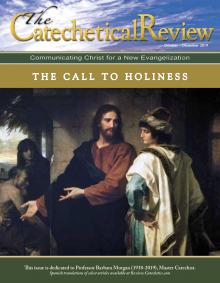On November 2, the Church commemorates the Feast of All Souls. In contrast to the Feast of All Saints the day before, the All Souls liturgy remembers all who have died, not just the saints in heaven. As such, it is a much more somber occasion. After all, many souls will never be saints in heaven: they have elected an eternity separate from the love of God and must therefore suffer the torments of hell. But even though “it is not the will of your heavenly Father that one of these little ones be lost” (Mt 18:14), the punishment of hell is both righteous and just. In The Problem of Pain, C.S. Lewis called the damned self-enslaved—their doors to eternity are locked from the inside. Love, even and especially God’s love, can never be forced. Thus, we ultimately do not mourn or pray for the conversion of souls in hell, for they would not want God even if they could have him.
There are those, however, that will never suffer eternal torture. They thirst painfully for God but have not yet achieved their heavenly reward. These souls have died in God’s friendship but must still be refined in the furnace of affliction (cf. Is 48:10): they must pay the temporal punishment for their sins. These are the Church Suffering, the holy souls in purgatory. It is chiefly them we remember in our prayers and in the sacrifice of the Mass on All Souls Day.
Coloring Our Faith
There is a maxim in the Church which states, “lex orandi, lex credendi.” Summarized in the Catechism, “the law of prayer is the law of faith: the Church believes as she prays” (par. 1124). Whether we realize it or not, vestments are part of that “concrete mode of catechesis,” which Pope St. John Paul II named as a function of sacred art. The style, the symbols, the color…these are all elements of sacred vestments which convey a subtle visual theology to all those participating in the Lord’s Supper. When it comes to Masses for those who have died, the visual prayer of the priest’s vestments can influence how we move forward in faith after the death of a loved one.
Regarding the color of sacred vestments, the General Instruction of the Roman Missal says this:
Besides the color violet, the colors white or black may be used at funeral services and at other Offices and Masses for the Dead in the Dioceses of the United States of America (#346e).
Yes, in the Ordinary Form of the Roman Rite, black is an acceptable and legitimate liturgical color for funerals and Masses for the Dead (including All Souls).
The rest of this online article is available for current Guild members.
This article is from The Catechetical Review (Online Edition ISSN 2379-6324) and may be copied for catechetical purposes only. It may not be reprinted in another published work without the permission of The Catechetical Review by contacting [email protected]

















